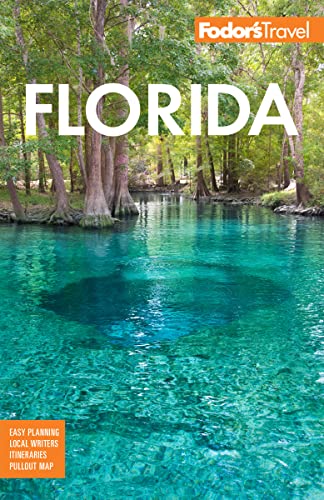Seafood in the Florida Keys
Fish. It's what's for dinner in the Florida Keys. The Keys' runway between the Gulf of Mexico or Florida Bay and Atlantic warm waters means fish of many fin. Restaurants take full advantage by serving it fresh, whether you caught it or a local fisherman did.
Menus at colorful waterfront shacks such as Snapper's (139 Seaside Ave., Key Largo 305/852–5956) in Key Largo and Half Shell Raw Bar (231 Margaret St., Key West 305/294–7496) range from basic raw, broiled, grilled, or blackened fish to some Bahamian and New Orleans–style interpretations. Other seafood houses dress up their fish in creative styles, such as Pierre's (MM 81.5 BS, Islamorada 305/664–3225 www.pierres-restaurant.com) hogfish meunière, or yellowtail snapper with pear-ricotta pasta at Café Marquesa (600 Fleming St., Key West 305/292–1244 www.marquesa.com). Try a Keys-style breakfast of "grits and grunts"—fried fish and grits—at the Stuffed Pig (3520 Overseas Hwy., Marathon 305/743–4059).
Built-In Fish
You know it's fresh when you see a fish market as soon as you open the restaurant door. It happens frequently in the Keys. You can even peruse the seafood showcases and pick the fish you want.
Many of the Keys' best restaurants are found in marina complexes, where the fishermen bring their catches straight from the sea. Try those in Stock Island (north of Key West) and at Keys Fisheries Market & Marina (MM 49 BS, end of 35th St., Marathon 305/743–4353, 866/743–4353).
Conch
One of the tastiest legacies of the Keys' Bahamian heritage (and most mispronounced), conch (pronounced konk) shows up on nearly every menu in some shape or form. It's so prevalent in local diets that natives refer to themselves as Conchs. Conch fritters are the most popular culinary manifestations, followed by cracked (pounded, breaded, and fried) conch, and conch salad, a ceviche-style refresher. Since the harvesting of queen conch is now illegal, most of the islands' conch comes from the Bahamas.
Florida Lobster
Where are the claws? Stop looking for them: Florida spiny lobsters don't have any. The sweet tail meat, however, makes up for the loss. Divers harvest these crustaceans from late July through March. Check with local dive shops on restrictions, and then get ready for a fresh feast. Restaurants serve them broiled with drawn butter or in dishes such as lobster Benedict, lobster spring rolls, lobster Reuben, and lobster tacos.
Grouper
Once central to Florida's trademark seafood dish—fried grouper sandwich—its populations have been overfished in recent years, meaning that the state has exerted more control over bag regulations and occasionally closes grouper fishing on a temporary basis during the winter season. Some restaurants have gone antigrouper to try to bring back the abundance, but most grab it when they can. Black grouper is the most highly prized variety.
Stone Crab
In season October 15 through May 15, it gets its name from its rock-hard shell. Fishermen take only one claw, which can regenerate in a sustainable manner. Connoisseurs prefer them chilled with tangy mustard sauce. Some restaurants give you a choice of hot claws and drawn butter, but this means the meat will be cooked twice, because it's usually boiled or steamed as soon as it’s taken from its crab trap.
Yellowtail Snapper
The preferred species of snappers, it’s more plentiful in the Keys than in any other Florida waters. As pretty as it is tasty, its mild, sweet, and delicate meat lends itself to any number of preparations, and it’s available pretty much year-round. Chefs top it with everything from Key lime beurre blanc to mango chutney. Ballyhoo's in Key Largo (MM 97.8, in median 305/852–0822) serves it 10 different ways.




